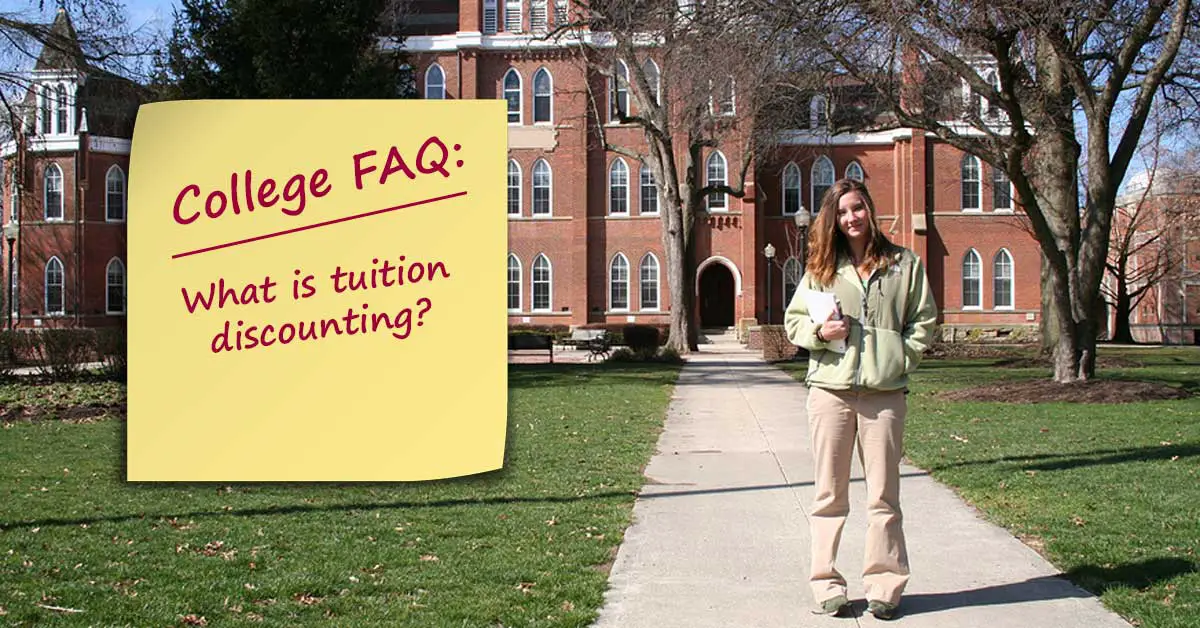 Tuition discounting refers to the scholarships and grants colleges and universities provide to students. The Association of Government Boards of Universities and Colleges defines it as “Tuition discounting is the process by which the institution offsets its published tuition price (sticker price) with institutional grant aid for enrolling students.” The students are not paying full tuition therefore the tuition is discounted.
Tuition discounting refers to the scholarships and grants colleges and universities provide to students. The Association of Government Boards of Universities and Colleges defines it as “Tuition discounting is the process by which the institution offsets its published tuition price (sticker price) with institutional grant aid for enrolling students.” The students are not paying full tuition therefore the tuition is discounted.
While tuition discounting includes all gift aid to students, need-based and merit-based money they don’t have to repay, it’s most commonly used when discussing merit awards. Tuition discounting is also the result of the practice of charging more for tuition to indicate “quality.” The college then offers the more desirable students large discounts in the form of merit aid. College often increase these discounts when they fail to meet their enrollment goals.
Inside Higher Education reports that the National Association of College and University Business Officers survey calculated the average discount rates for private colleges is 46.4% which was only 38% a decade ago. According to the College Board, this means that “On average, net tuition and fees for private nonprofit four-year institutions are lower in inflation-adjusted dollars in 2013?14 than they were a decade earlier — $12,460 versus $13,600.”
Why don’t colleges just lower the tuition for everyone and eliminate the need for tuition discounting. Some are. But other don’t because as one college discovered, “twice as many families preferred the high-cost, high-discount approach, and the consultants warned that cutting tuition would cut the freshman class in half.”
The colleges aren’t the only guilty party–people like getting “merit” scholarships. And many schools believe the high prices and high discounts gives them flexibility in attracting the more desirable students whether through merit or need-based aid.


